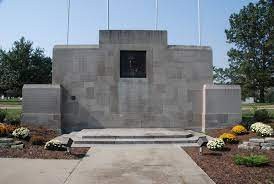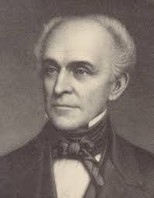Governor Edward Coles State Memorial
Introduction
Text-to-speech Audio
The Governor Edward Coles State Memorial features a bronze portrait of Coles; the Illinois Historic Preservation Agency maintains the monument as a state historic site. Erected in 1929, the memorial features a bronze portrait of Coles, sculpted by artist Leon Hermant, that stands in Valley View Cemetery in Edwardsville. Edward Coles was the second governor of Illinois and a leading abolitionist who helped defeat an attempt to legalize slavery in the state during the 1820s. Coles himself was once a Virginia slave owner, but he came to see the institution of slavery as immoral and freed his slaves at a great financial cost. Representing those who opposed slavery, Coles won the 1822 gubernatorial election and then defeated an attempt to call a convention that would have revised the state constitution and legalized slavery in Illinois.
Images


Backstory and Context
Text-to-speech Audio
The history of slavery and of the African American community in Madison County and the State of Illinois changed significantly due to the efforts of Edward Coles, the second governor of Illinois. Coles was born into one of the wealthiest families in Virginia in 1786 and graduated from the College of William & Mary. Although raised on a slave plantation, Coles was an anti-slavery advocate who urged Presidents Thomas Jefferson and James Madison to free their slaves. Madison, a close friend of Coles, appointed him as the president’s private secretary from 1810-1815. In 1819, Coles left Virginia to move to Edwardsville, taking with him 17 enslaved people: six adults and 11 children. Once on the Ohio River, Coles freed all 17 enslaved people and promised each head of household a parcel of land.
James Monroe appointed Coles as Registrar of the Federal Land Office, a position he held until he was elected governor in 1822. In 1824, Coles and supporters defeated a pro-slavery coalition that called for a new Illinois constitutional convention to make Illinois a slave state. Coles’s other accomplishments include the creation of the Illinois and Michigan Canal and the reorganization of the state judiciary. Coles ran for Congress in 1831 but lost the election. Coles left Illinois for Pennsylvania in 1833 and died in the Keystone State in 1868.
Sources
Governor Coles State Memorial, Wikipedia. August 23rd, 2022. Accessed November 21st, 2022. https://en.wikipedia.org/wiki/Governor_Coles_State_Memorial .
Governor Coles Monument, (sculpture)., Art Inventories Catalog. Accessed November 21st, 2022. https://siris-artinventories.si.edu/ipac20/ipac.jsp?&profile=ariall&source=~!siartinventories&uri=full=3100001~!8319~!0#focus .
Edward Coles to Thomas Jefferson, 31 July 1814, Founders Online. Accessed November 21st, 2022. https://founders.archives.gov/documents/Jefferson/03-07-02-0374.
Edward Coles, Monticello. Accessed November 21st, 2022. https://www.monticello.org/site/research-and-collections/edward-coles#footnote1_77k90zi .
Edward Coles, Office of the Illinois Secretary of State . Accessed November 21st, 2022. https://www.ilsos.gov/departments/library/heritage_project/home/chapters/the-birth-of-the-illinois-state-library/edward-coles/.
The original entry was written by Madelyn Knight and edited by Jessica Guldner
